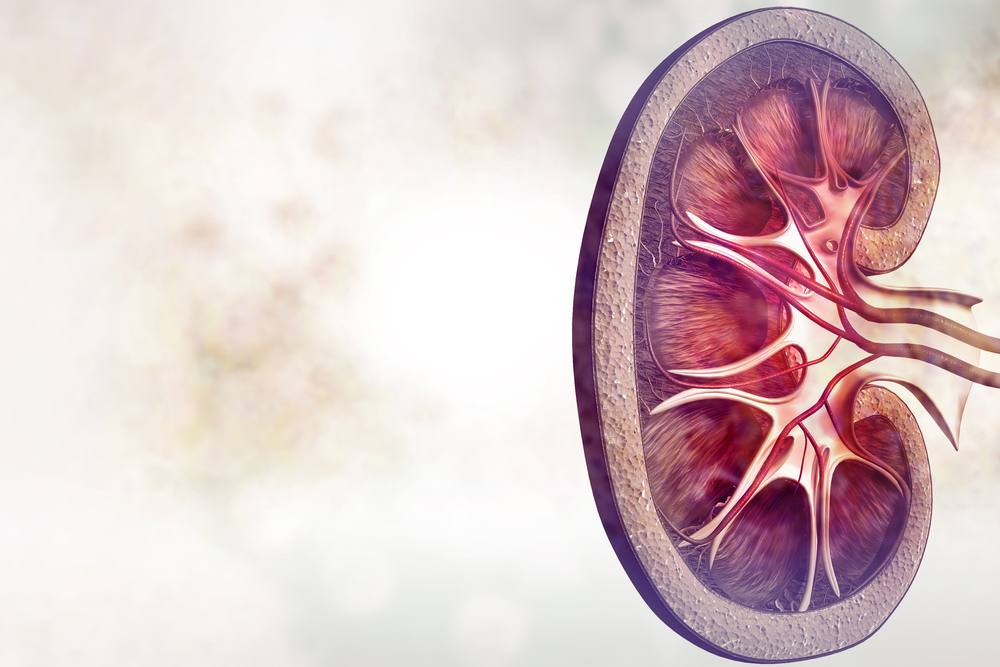Urinary Gremlin Protein Levels a Potential Biomarker for ANCA-associated Renal Vasculitis, Study Finds

Levels of Gremlin — a protein that is overexpressed during kidney damage — in the urine may serve as a specific biomarker for ANCA-associated renal vasculitis, a study shows.
The study, “Gremlin, A Potential Urinary Biomarker of Anca-Associated Crescentic Glomerulonephritis,” was published in the journal Scientific Reports.
ANCA-associated vasculitis is the major cause of rapidly progressive glomerulonephritis, which is inflammation of the tiny filters in the kidneys. Despite advances in understanding the underlying cause of the disease, renal outcomes remain poor in a high percentage of patients.
Gremlin is a gene thought to play a role in human development but is no longer expressed when a person reaches adulthood.
Interestingly, it gets re-expressed during kidney damage and seems to plays a role in the progression of diabetic nephropathy — kidney damage that results from having diabetes — as well as other chronic renal diseases, including ANCA-associated crescentic glomerulonephritis.
Crescentic glomerulonephritis is a subtype of glomerulonephritis characterized by the presence of extensive glomerular crescents, which are a hallmark of inflammation.
It is not known whether Gremlin is present in the urine of patients with ANCA-associated crescentic glomerulonephritis and whether it can serve as a biomarker with either diagnostic or prognostic value.
Researchers, therefore, conducted a study to determine whether urinary Gremlin can be associated with renal functional status, renal biopsy findings, or outcomes in patients with ANCA-associated crescentic glomerulonephritis.
They assessed three groups of participants: 20 patients with ANCA-associated renal vasculitis, 86 patients with other glomerular diseases, and 11 healthy people used as controls.
They found that urinary Gremlin levels were very high in ANCA patients (an average of 354 ug/gCr), moderately elevated in those with non-ANCA glomerulonephritis (an average of 83 ug/gCr), and normal in the controls (an average of 11.3 ug/gCr).
Researchers showed that high levels of urinary Gremlin were significantly correlated with renal expression of Gremlin.
Additionally, high urinary Gremlin levels were correlated with the number of glomerular crescents, renal CD68-positive cells (a marker of inflammatory cells), tubulointerstitial fibrosis (a harmful process associated with renal function deterioration), and serum creatinine levels (a marker of kidney damage).
These results show that high urinary Gremlin levels are associated with several different markers of inflammation and kidney damage.
Statistical analysis indicates that a value of urinary Gremlin above 43 ug/gCr is able to diagnose glomerular diseases with very high accuracy — 72% sensitivity and 100% specificity.
Sensitivity is the ability of a test to correctly identify those with the disease, while specificity is the ability of the test to correctly identify those without the disease.
In the case of ANCA-associated renal vasculitis, a value of urinary Gremlin above 241 ug/gCr is associated with a 55% sensitivity and 100% specificity.
“In conclusion we have identified a highly specific association between ANCA+ crescentic glomerulonephritis and the level of urinary Gremlin,” the investigators wrote. “The shedding of Gremlin directly into the urine makes it very attractive as a potential urinary biomarker of renal vasculitis.”






